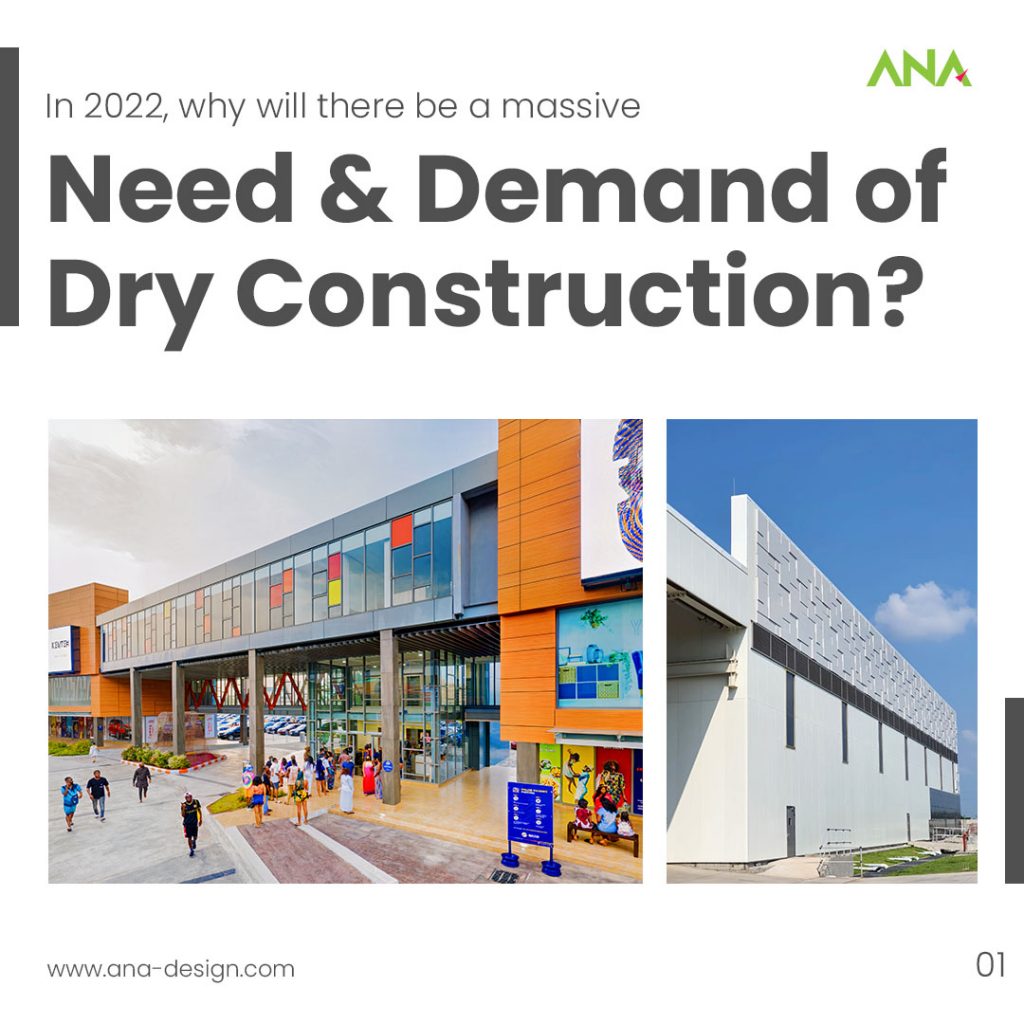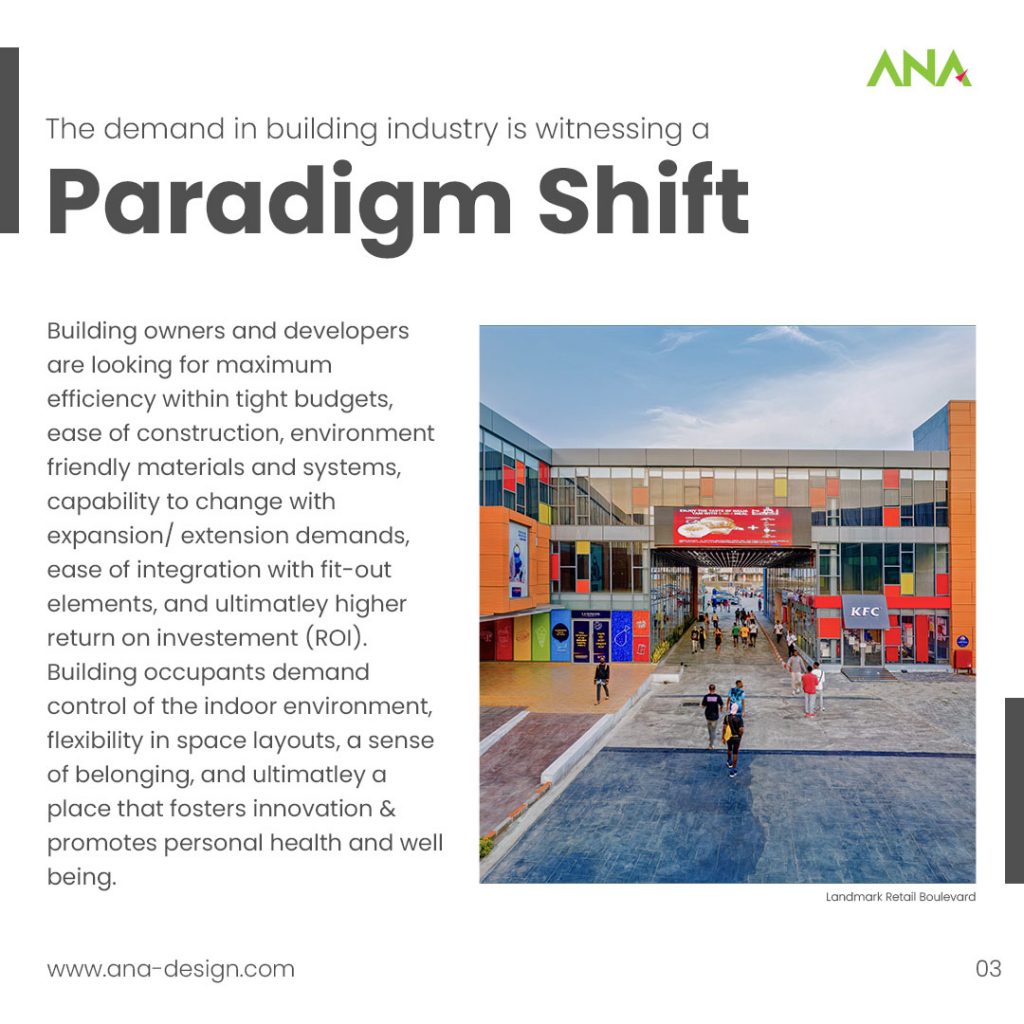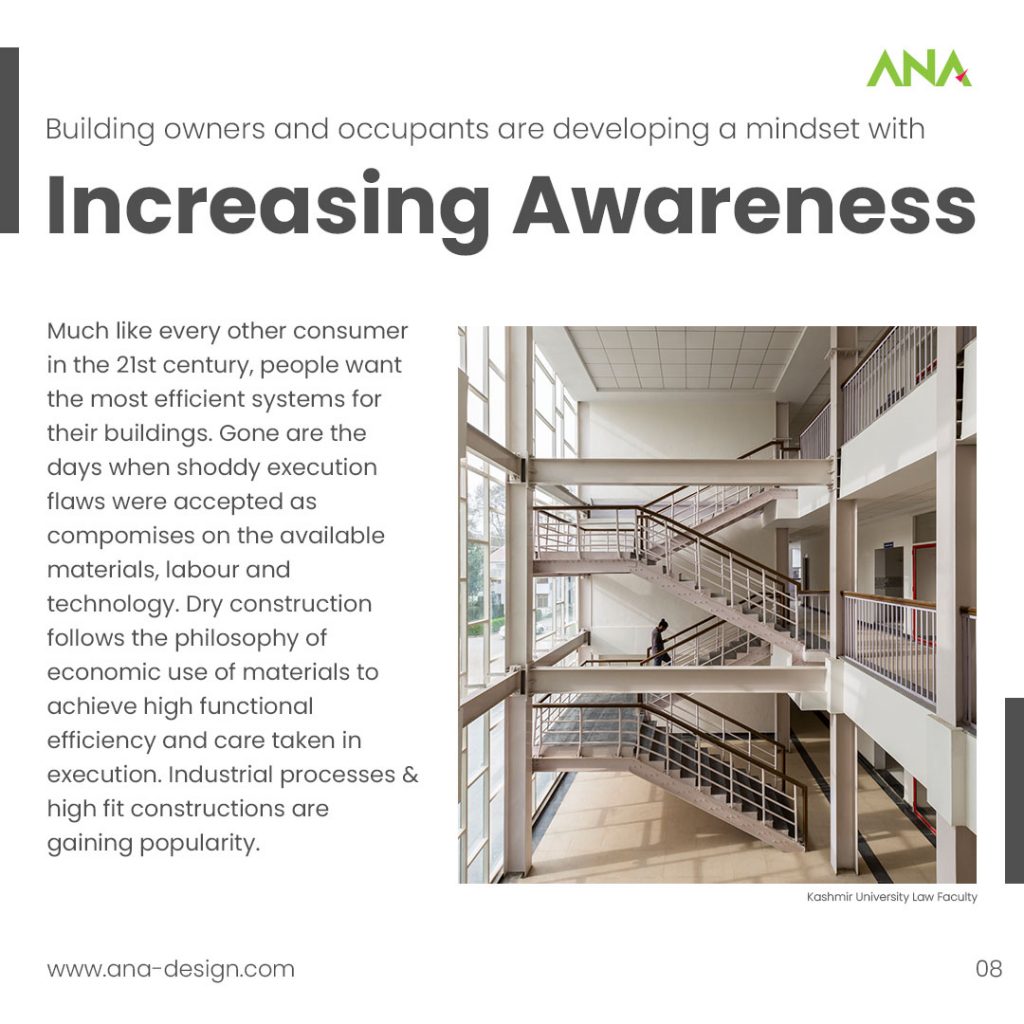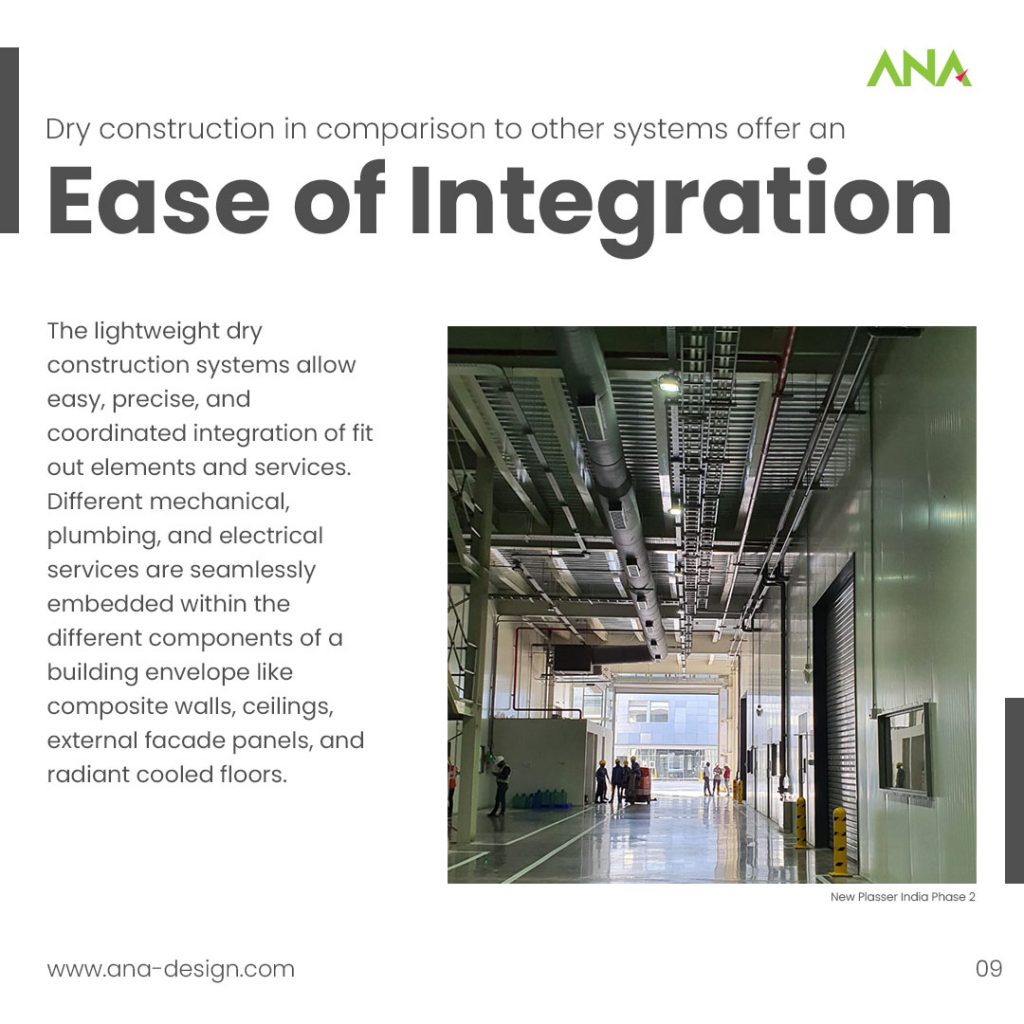- Buildings with traditional construction systems possess a
Risk of Redundancy
An evolving trend of minimizing weight of components and systems led to highly developed lightweight products in the automotive, shipbuilding, and aircraft manufacturing industry. this has somehow been neglected in the building industry. Economic, ecological, and technological developments are resulting in the need to plan lightness and flexibility in our buildings if we want them to remain useful in the future.
- The demand in building industry is witnessing a
Paradigm shift
Building owners and developers are looking for maximum efficiency within tight budgets, ease of construction, environment friendly materials and systems, capability to change with expansion/extension demands, ease of integration with fit-out elements, and ultimately higher return on investment (ROI). Building occupants demand control of their indoor environment, flexibility in spatial layouts, a sense of belonging, and ultimately a place that fosters innovation and promotes personal health & well-being.
- Dry construction in comparison to other systems promises an
Innovation potential
Combination and layering of various materials with individual properties in dry construction ultimately lead to innovative solutions within the conventional building parts such as façade, flooring, ceiling, walls and partitions. By minimizing the weight, use of materials, self-load of components, processes for execution, and performing multiple functions such as insulation, fire protection, etc., dry construction offers limitless permutations and combinations.
- Modern building occupants have a growing need for
Individualization
Buildings constructed in the 20th century with small format interior layouts which were acceptable then, are soon going to be redundant. There’s a massive demand for freedom of expression, flexibility, need for change, sense of belonging, and individuality amongst occupants. Dry construction offers flexibility to transform spaces as per needs. This is true for all building typologies.
- Dry construction in comparison to others shows a worldwide
market inclination
There is a growing concern towards adopting sustainable practices and reducing consumption of non-biodegradable construction materials. With an increasing demand for lightweight, prefabricated building systems, investors and real estate developers are in favor of dry construction practices now more than ever before. Speed, predictability, and high requirement of skill are the key determining factor.
- Current economic scenario presents a need for
Retrofitting and Rehabilitation
Dry construction can be added to existing constructions to improve specific properties. This is important for infill development (extra storeys, expansions, extensions, alterations). The low weight of this system means that components can be sized more economically than would be the case with a system involving masonry and concrete. Moreover changes in conventional solid heavy-weight building fabric is becoming expensive and difficult to execute.
- Building owners and occupants are developing a mindset with
Increasing Awareness
Much like every other consumer in the 21st century, people want the most efficient systems for their buildings. Gone are the days when shoddy execution flaws were accepted as compromises on the available materials, labor and technology. Dry construction follows the philosophy of economic use of materials to achieve high functional efficiency and care taken in execution. Industrial processes and high fit construction are gaining popularity.
- Dry construction in comparison to other systems offer an
Ease of Integration with Building Services
The lightweight dry construction systems allow easy, precise, and coordinated integration of fit out elements and services. Different mechanical, plumbing, and electrical services are seamlessly embedded within the different components of a building envelope like composite walls, ceilings, external façade panels, and radiant cooled floor.
- Demand to simultaneously fulfill multiple requirements of
Building Physics
Developments in dry and lightweight construction have led to complex building elements in which, for functional and technical reasons, it is necessary to combine layers of materials which often exhibit fundamentally different mechanical and building physics parameters. In many cases the combinations of distinct materials or components can also be exploited for multiple purposes.










